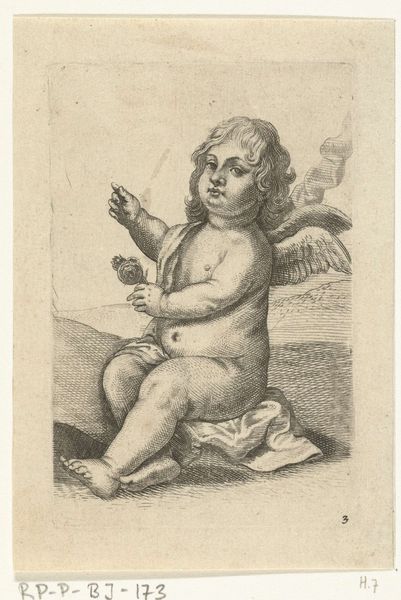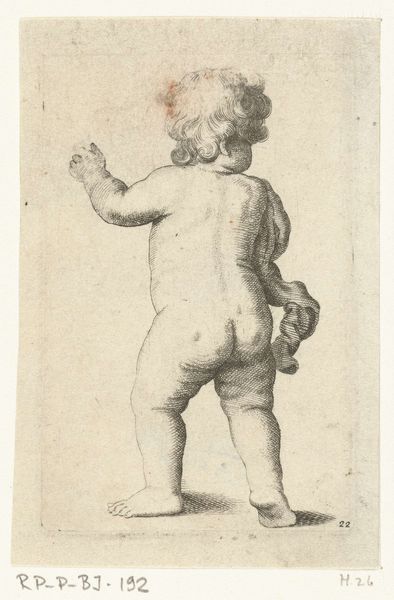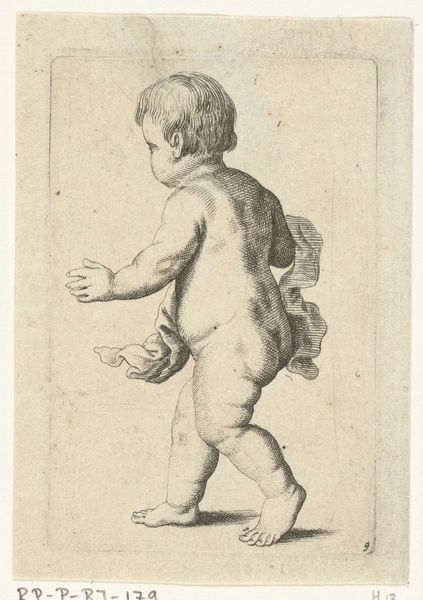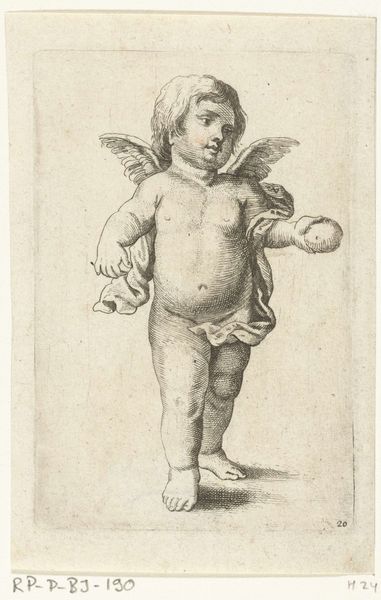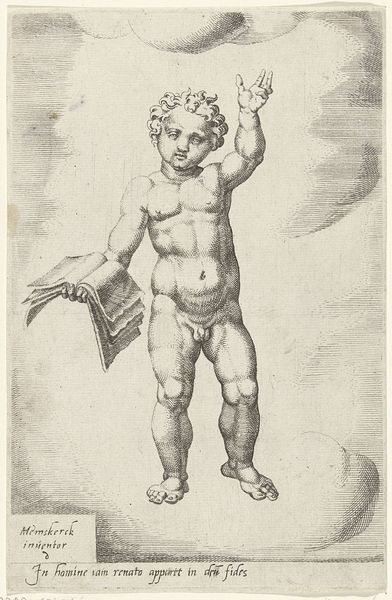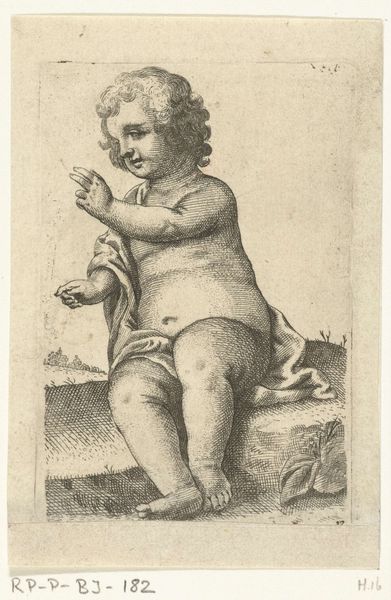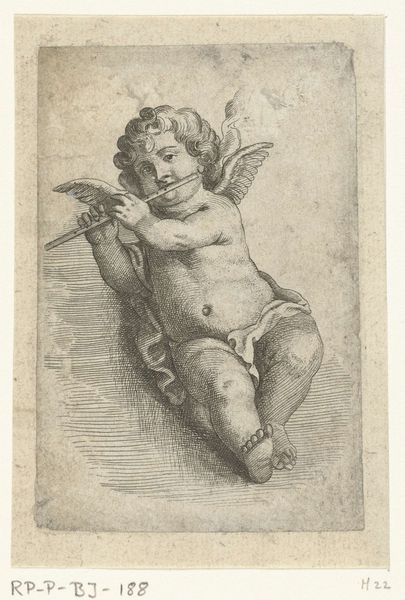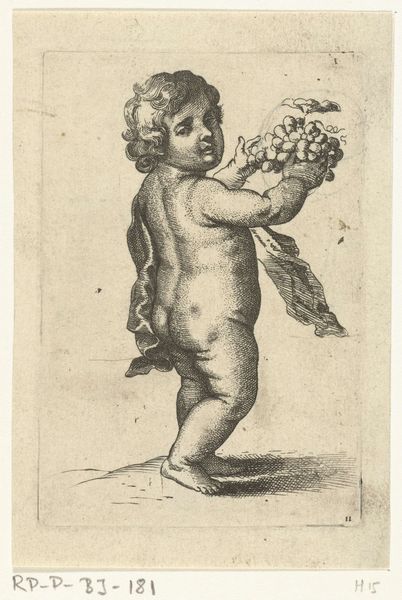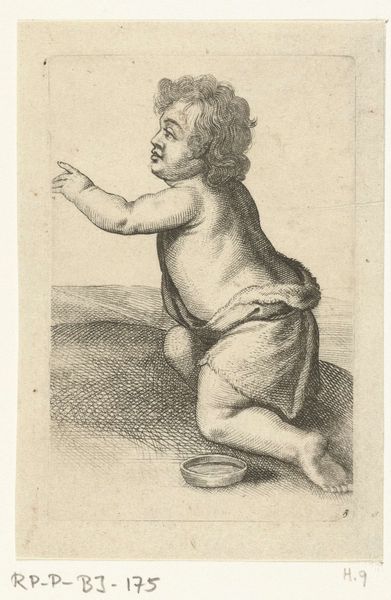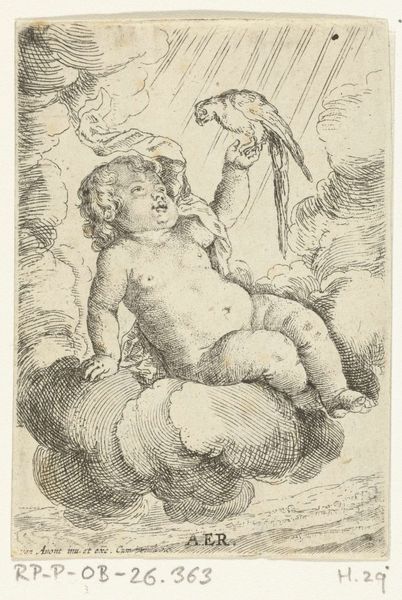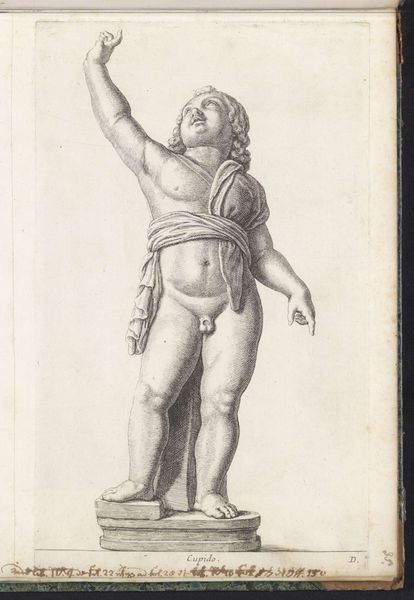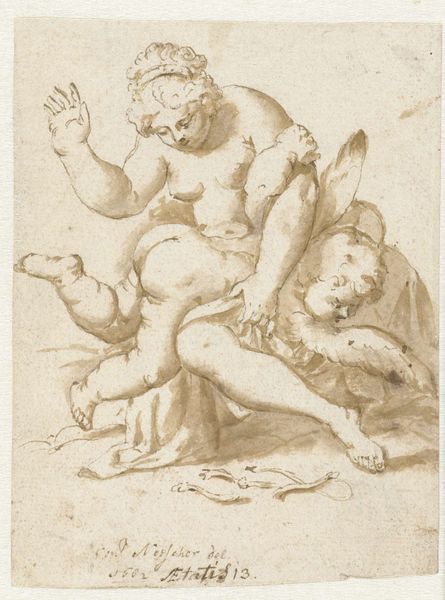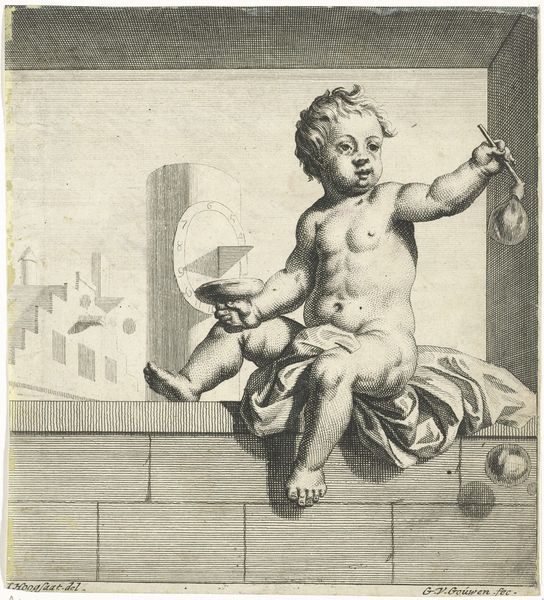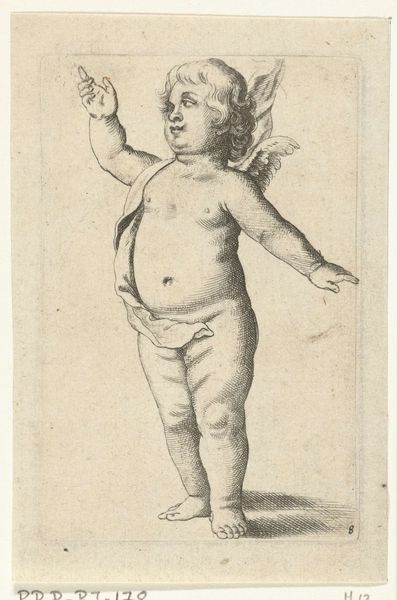
drawing, intaglio, pencil, engraving
#
portrait
#
drawing
#
baroque
#
intaglio
#
pencil sketch
#
figuration
#
pencil drawing
#
pencil
#
line
#
portrait drawing
#
northern-renaissance
#
nude
#
engraving
Dimensions: height 103 mm, width 67 mm
Copyright: Rijks Museum: Open Domain
Curator: This engraving, residing here at the Rijksmuseum, is titled "Waving Angel from Behind," and is attributed to Pieter van Avont. It likely dates from sometime between 1630 and 1652. Editor: The overwhelming thing for me is its texture. The density of line creates a sense of three-dimensionality, a tactile quality that's almost sculptural despite being a drawing. Curator: Precisely. This embodies the artistic interest in naturalism that was gaining momentum at that time. Angels and other heavenly figures weren't merely symbolic; they were imbued with realistic forms and features that spoke to a broader religious and philosophical context. The public's growing involvement in religious practices prompted new artistic themes too. Editor: Right. Look at how van Avont uses hatching to describe the form. See the light catching the curve of the cherub's back, then diffusing toward its buttocks? I think this engraving technique really focuses our attention to line and form above everything else. Curator: Which draws parallels with Northern Renaissance ideals while foreshadowing the more dramatic elements of the Baroque. The depiction of the angel is an embrace of sensual beauty. Did this embrace mark a more secular worldview at the time? Not necessarily, it can be seen as simply an intensification of religious feeling. Editor: Interesting how, despite being seen from behind, there's still such a feeling of reaching out. I feel pulled towards something. Curator: You know, engravings like these often served as models for larger paintings or as standalone works intended for private devotion. The viewer would have had a very intimate relationship with an image like this. It brings up the changing relationship between the public, art, and religious doctrine. Editor: Now when I look, I wonder, is he falling, or rising? It seems so precarious. Curator: That sense of ambivalence is crucial. Its very vulnerability evokes pity, compassion, all those emotions a carefully crafted religious image might seek to elicit. Editor: The subtlety of the cross-hatching almost makes the figure float off the paper. I have been drawn into its atmosphere by your reading of the socio-cultural context. Curator: And I appreciate how you’ve helped me look beyond that to the immediate and profound sensual effect that such skillful deployment of line creates.
Comments
No comments
Be the first to comment and join the conversation on the ultimate creative platform.
